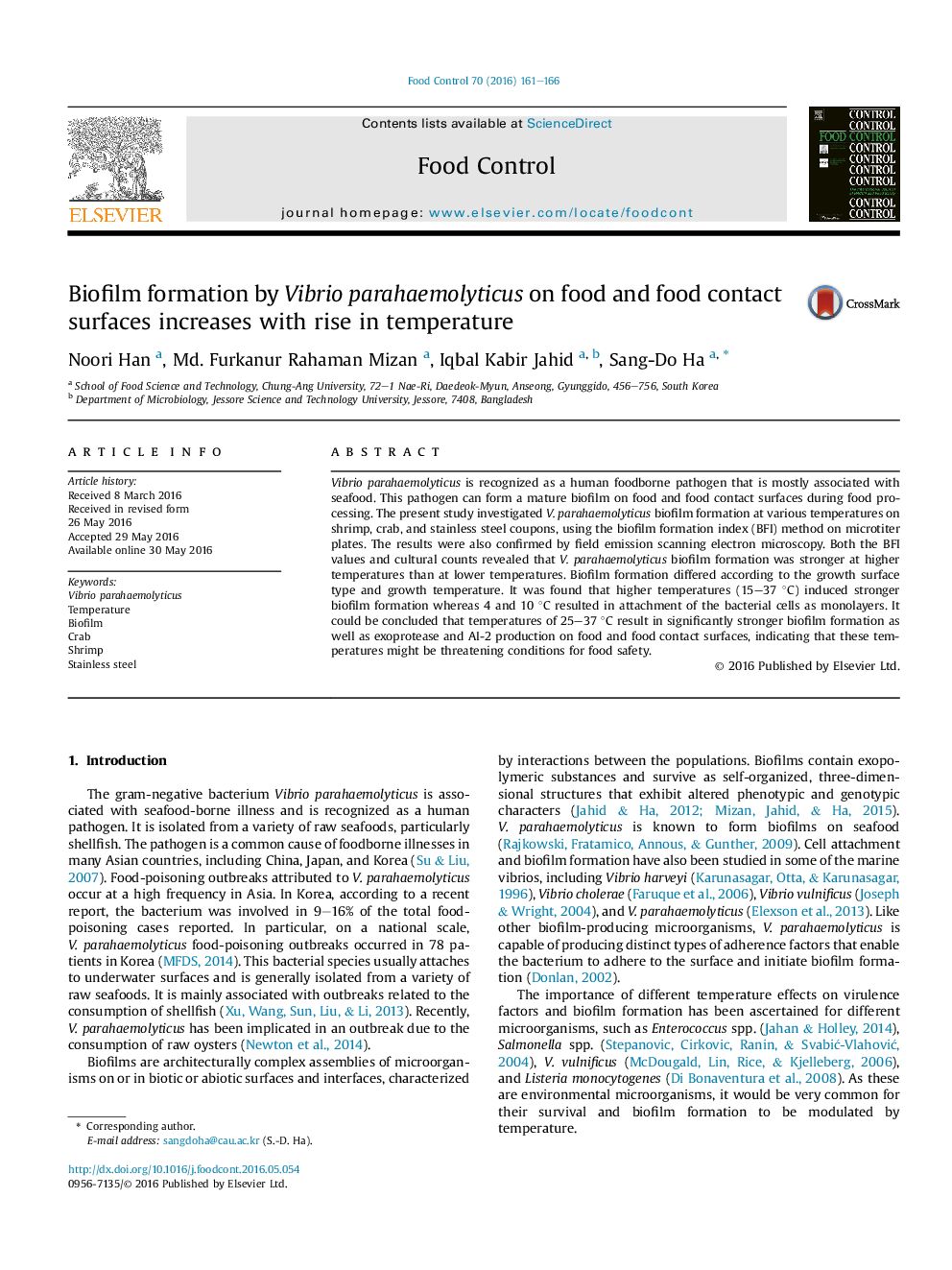| Article ID | Journal | Published Year | Pages | File Type |
|---|---|---|---|---|
| 4558983 | Food Control | 2016 | 6 Pages |
•Vibrio parahaemolyticus causes human foodborne diseases that are mostly associated with seafood.•This pathogen can form a mature biofilm on food and food contact surfaces during food processing.•Biofilm formation differed according to the growth surface type and growth temperature.•Higher temperatures enhance the formation of V. parahaemolyticus biofilms on foods and food contact surfaces.
Vibrio parahaemolyticus is recognized as a human foodborne pathogen that is mostly associated with seafood. This pathogen can form a mature biofilm on food and food contact surfaces during food processing. The present study investigated V. parahaemolyticus biofilm formation at various temperatures on shrimp, crab, and stainless steel coupons, using the biofilm formation index (BFI) method on microtiter plates. The results were also confirmed by field emission scanning electron microscopy. Both the BFI values and cultural counts revealed that V. parahaemolyticus biofilm formation was stronger at higher temperatures than at lower temperatures. Biofilm formation differed according to the growth surface type and growth temperature. It was found that higher temperatures (15–37 °C) induced stronger biofilm formation whereas 4 and 10 °C resulted in attachment of the bacterial cells as monolayers. It could be concluded that temperatures of 25–37 °C result in significantly stronger biofilm formation as well as exoprotease and AI-2 production on food and food contact surfaces, indicating that these temperatures might be threatening conditions for food safety.
